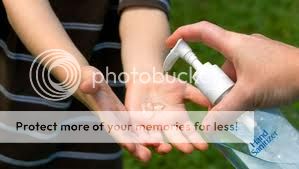
Most people know that cold and flu viruses can contaminate doorknobs, faucets and other surfaces. But for how long?
Studies have found that the survival time for both kinds of viruses varies greatly, from a few seconds to 48
hours. The reasons have to do with a number of factors, including the type of surface, humidity and
temperature.
For example, cold and flu viruses survive longer on inanimate surfaces that are nonporous, like metal, plastic and wood, and less on porous surfaces, like clothing, paper and tissue. Most flu viruses can live one to two days on nonporous surfaces, and 8 to 12 hours on porous surfaces. But a 2006 study found that avian influenza seemed particularly hardy, surviving as long as six days on some surfaces.
Cold viruses, however, deteriorate quickly. A study in 2007 found that when objects in a hotel room - light switches, telephones - were contaminated with a cold virus, 60 percent of healthy volunteers picked up the virus when they touched one of the objects an hour later. Eighteen hours later, the transmission rate was cut in half.
On skin, cold and flu viruses generally last less than a few minutes, but that can be plenty of time: studies show that most people touch their hands or mouth several times in the course of daily activities - enough to cause infection.
THE BOTTOM LINE Flu viruses tend to survive longer than cold viruses.
If you are looking for a a good disinfecting wipe, take a look at
Germ Off Fragrance Free Disinfecting Wipes. Kills odor-causing bacteria* found on hard,non-porous household, kitchen, and bathroom surfaces. Great for cleaning around the toilet. Leaves your bathroom and kitchen fresh and clean. The smart way to clean and disinfect.
*Kills 99.9% of Salmonella choleraesuis(ATCC*10708), Escherichia
coli(ATCC*11229), and Escherichia Coli 0157:H7(ATCC*43895).
Germ Off Fragrance Free Disinfecting Wipes
Kills odor-causing bacteria* found on hard,non-porous household,
kitchen, and bathroom surfaces. Great for cleaning around the toilet.
Leaves your bathroom and kitchen fresh and clean. The smart way to clean
and disinfect.
*Kills 99.9% of Salmonella choleraesuis(ATCC*10708), Escherichia
coli(ATCC*11229), and Escherichia Coli 0157:H7(ATCC*43895).
- See more at: http://www.wellnessnewsonline.net/a2wellness/article_b.html#sthash.wCIroHSQ.dpuf
Most
people know that cold and flu viruses can contaminate doorknobs, faucets and
other surfaces. But for how long?
Studies have found that the survival time for both kinds of viruses
varies greatly, from a few seconds to 48 hours. The reasons have to do with
a number of factors, including the type of surface, humidity and
temperature.
For example, cold and flu viruses survive longer on inanimate surfaces that
are nonporous, like metal, plastic and wood, and less on porous surfaces, like
clothing, paper and tissue. Most flu viruses can live one to two days on
nonporous surfaces, and 8 to 12 hours on porous surfaces. But a 2006 study found
that avian influenza seemed particularly hardy, surviving as long as six days on
some surfaces.
Cold viruses, however, deteriorate quickly. A study in 2007 found that when
objects in a hotel room - light switches, telephones - were contaminated with a
cold virus, 60 percent of healthy volunteers picked up the virus when they
touched one of the objects an hour later. Eighteen hours later, the transmission
rate was cut in half.
On skin, cold and flu viruses generally last less than a few minutes, but
that can be plenty of time: studies show that most people touch their hands or
mouth several times in the course of daily activities - enough to cause
infection.
THE BOTTOM LINE Flu viruses tend to survive longer than cold viruses.
- See more at: http://www.wellnessnewsonline.net/a2wellness/article_b.html#sthash.wCIroHSQ.dpuf








